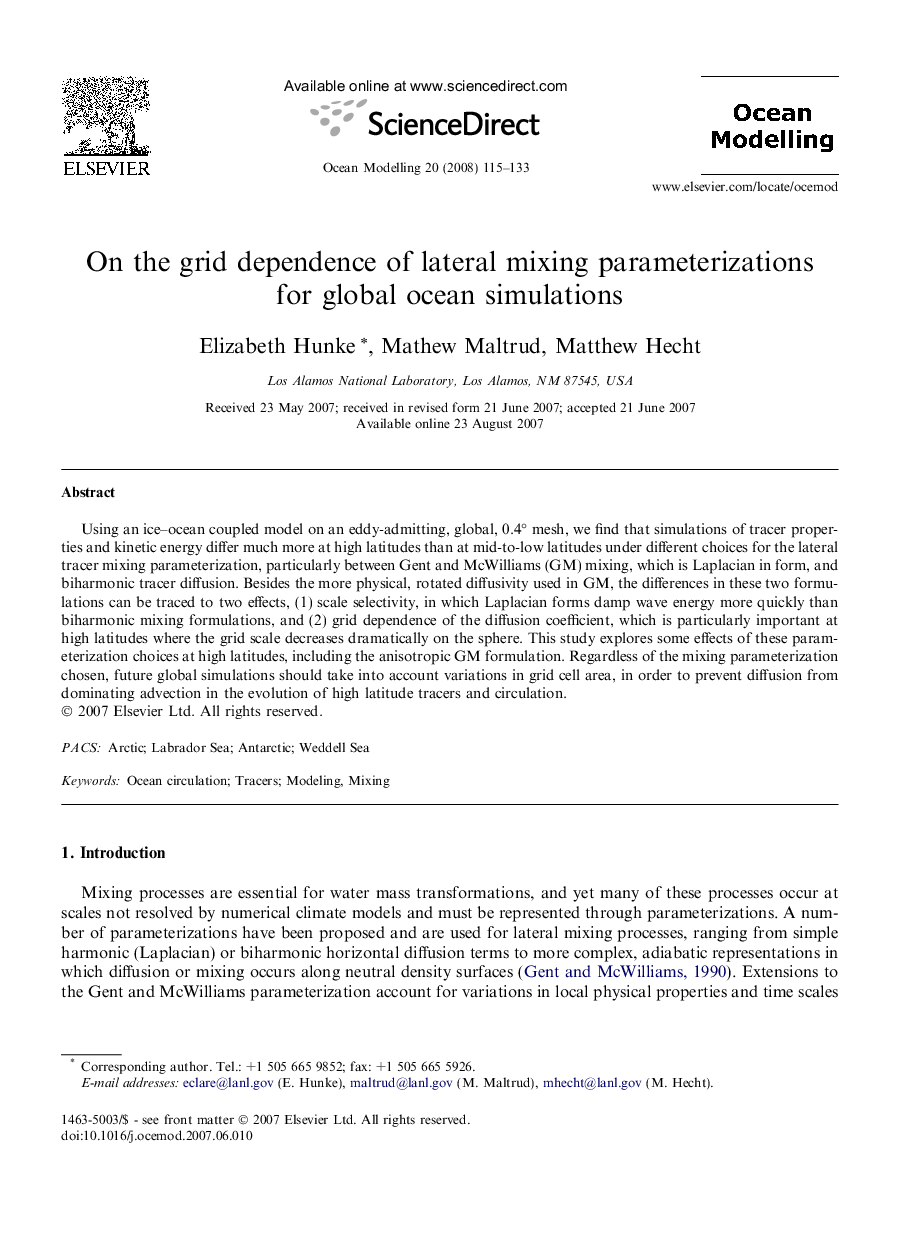| Article ID | Journal | Published Year | Pages | File Type |
|---|---|---|---|---|
| 4552745 | Ocean Modelling | 2008 | 19 Pages |
Using an ice–ocean coupled model on an eddy-admitting, global, 0.4° mesh, we find that simulations of tracer properties and kinetic energy differ much more at high latitudes than at mid-to-low latitudes under different choices for the lateral tracer mixing parameterization, particularly between Gent and McWilliams (GM) mixing, which is Laplacian in form, and biharmonic tracer diffusion. Besides the more physical, rotated diffusivity used in GM, the differences in these two formulations can be traced to two effects, (1) scale selectivity, in which Laplacian forms damp wave energy more quickly than biharmonic mixing formulations, and (2) grid dependence of the diffusion coefficient, which is particularly important at high latitudes where the grid scale decreases dramatically on the sphere. This study explores some effects of these parameterization choices at high latitudes, including the anisotropic GM formulation. Regardless of the mixing parameterization chosen, future global simulations should take into account variations in grid cell area, in order to prevent diffusion from dominating advection in the evolution of high latitude tracers and circulation.
